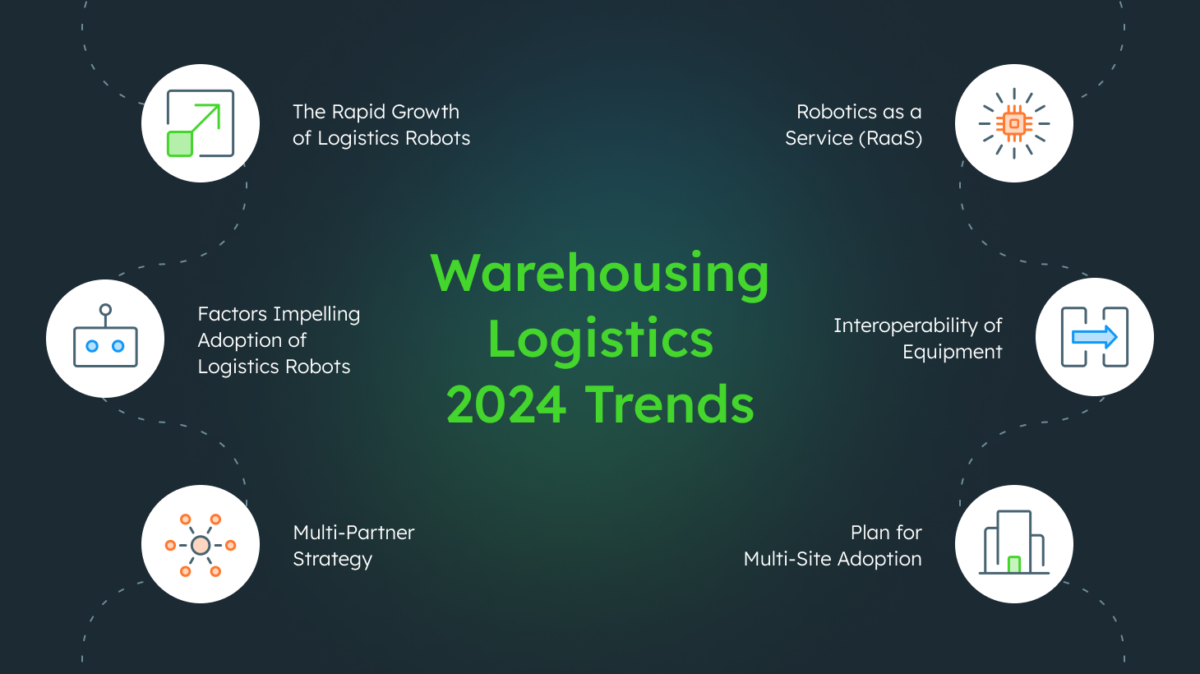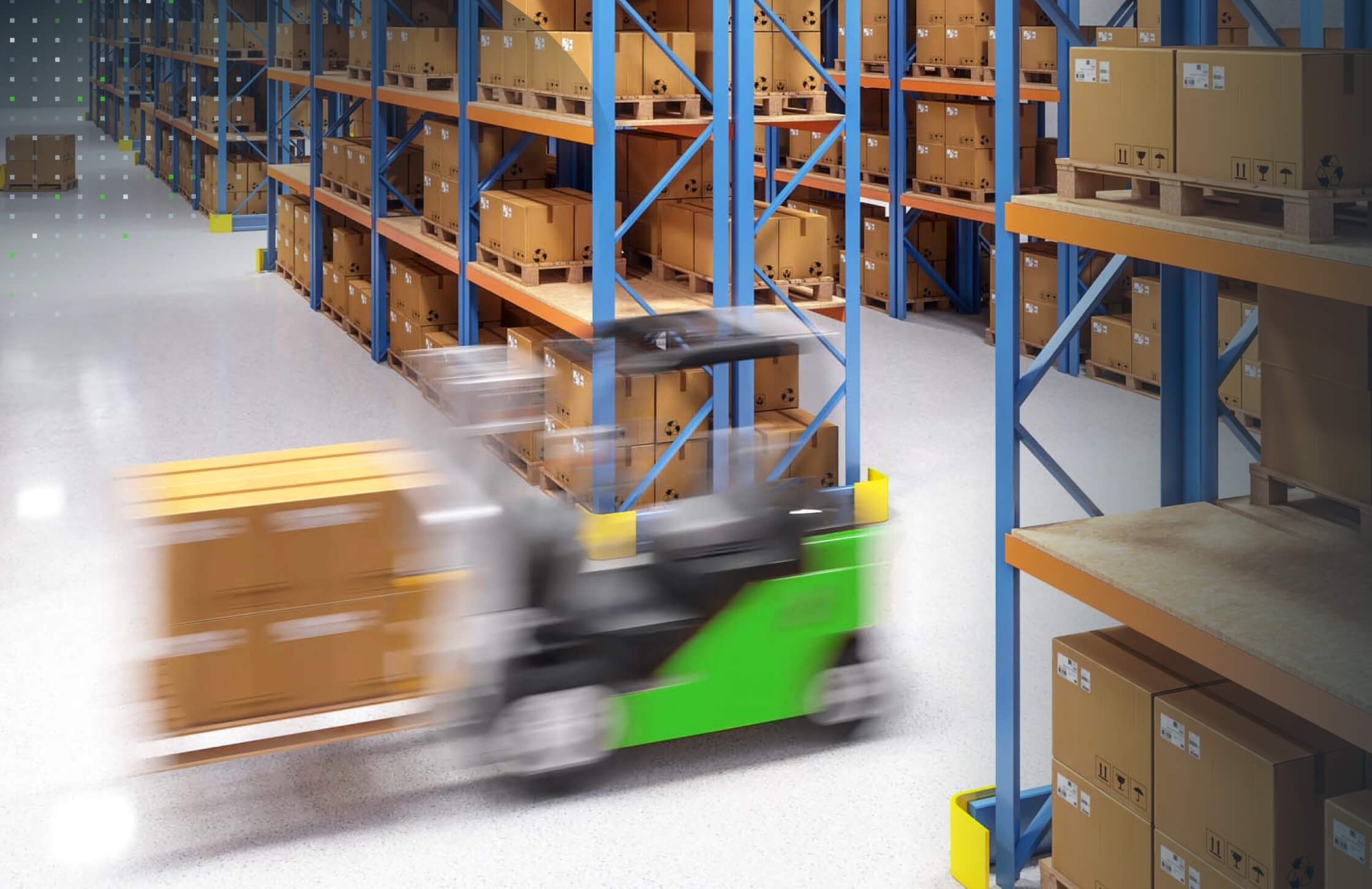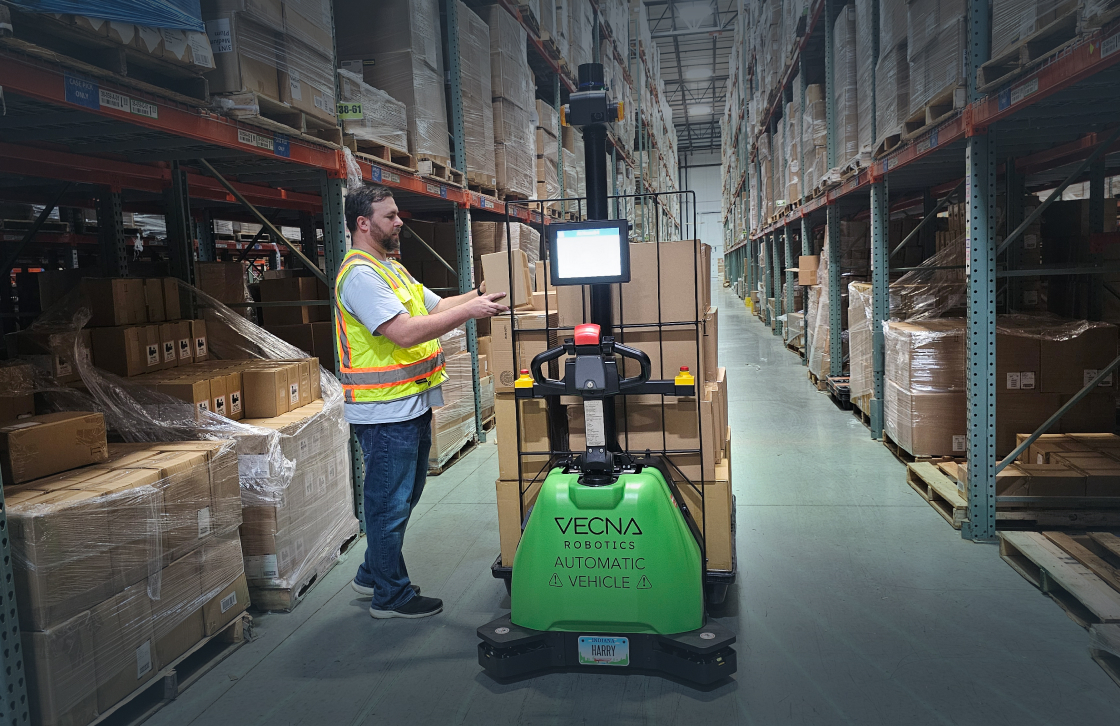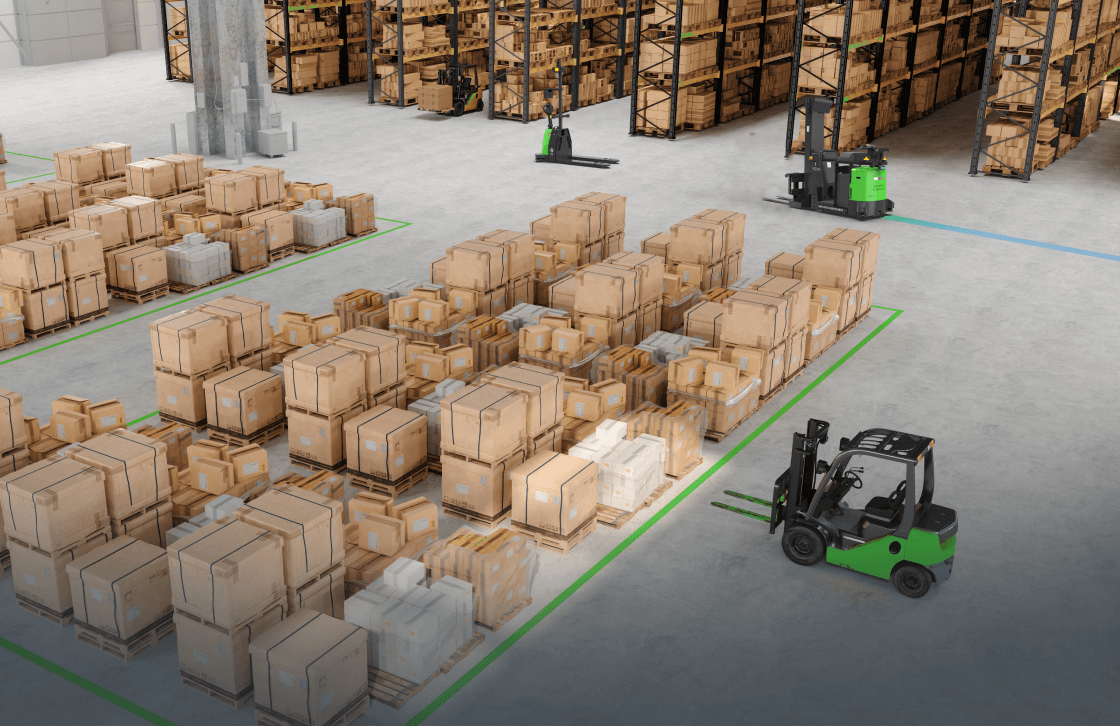What are logistics robots?
Logistics robots, specialized robotic systems designed to automate the movement of goods and materials within warehouses and manufacturing facilities, have revolutionized modern-day warehousing challenges. These transportation robots provide an effective means for businesses to optimize operations, cut labor costs, and enhance efficiency. Only a few years ago, these robotic applications were in their early pilot stages, but today, they have evolved into multi-site, large-scale deployments, marking a significant shift in the landscape of warehousing logistics.
These robots come equipped with advanced safety features, including obstacle detection, ensuring their deployment aligns with worker safety protocols. The advantages they bring to the table are manifold: improved precision, reduced labor expenses, and heightened productivity through the power of automation. As we step into 2023, it’s paramount to examine the prevailing trends within the warehousing realm.
In the midst of rapid technological strides and escalating demands from the e-commerce sector, logistics robots have emerged as the ultimate solution. Their capacity to seamlessly integrate into existing infrastructures, coupled with their adaptability, positions them as indispensable tools for companies aiming to maintain a competitive edge. Beyond the initial investment, these robotic systems yield lasting returns by minimizing errors, expediting processing durations, and ensuring consistent, round-the-clock performance.
The integration of artificial intelligence and machine learning marks the latest evolution in these robots. Their newfound intelligence empowers them to predict and accommodate shifting operational requirements, elevating them from mere automated agents to intelligent operational collaborators. For numerous enterprises, the transition to robot-assisted logistics is no longer just a strategic choice; it has become an imperative in a fast-paced, demand-centric market landscape.
Gathered from a variety of sources across the warehousing landscape, here are some of the trends to look for in 2024.

Which robots can be used for logistics?
In the rapidly evolving world of logistics, a diverse array of robotic systems plays a pivotal role in streamlining operations and enhancing efficiency. Each type of robot is tailored to meet specific needs within the logistics chain, from warehousing and inventory management to order fulfillment and delivery. Understanding the variety of robots utilized can provide insights into how they collectively transform the logistics landscape.
Autonomous mobile robots (AMRs)
Autonomous Mobile Robots are at the forefront of changing logistics operations. Unlike their predecessors, the Automated Guided Vehicles (AGVs), AMRs navigate using sensors and onboard intelligence, allowing them to understand their environment and make decisions on the fly. This flexibility enables AMRs to perform a variety of tasks such as picking, transporting, and sorting without human intervention. Their adaptability makes them ideal for dynamic environments where layouts and operational demands frequently change.
Automated guided vehicles (AGVs)
AGVs are often the starting point for many companies venturing into automation. These robots follow fixed routes marked by wires, magnetic strips, or lasers, making them reliable for repetitive tasks over consistent paths. Although less flexible than AMRs, AGVs excel in environments where tasks like transporting goods over long distances within a facility are needed. They are particularly effective in large-scale distribution centers where high throughput and efficiency are critical.
Drones
In logistics, drones are not confined to just aerial devices but include ground-based units capable of navigating warehouse aisles. Aerial drones, however, are gaining traction for their ability to perform inventory checks in large warehouses quickly. They fly over racks to scan and verify inventory, drastically reducing the time and labor involved in manual checks. Ground drones can transport small items across warehouse facilities or even deliver packages directly to customers in urban areas.
Robotic arms
Robotic arms are versatile tools in logistics, used for picking, packing, and palletizing goods. These robots are integrated into production lines where precision and speed are paramount. Advanced vision systems and gripping technologies allow these arms to handle a wide range of products, from fragile items to heavy goods, enhancing accuracy and reducing breakage or product damage.
Sortation robots
Sortation robots are specialized to streamline the sorting process in warehouses and distribution centers. They quickly categorize items based on size, weight, destination, or other criteria, directing them to appropriate packing areas or delivery routes. This rapid categorization helps manage high volumes of goods, especially during peak times like holidays or sales seasons, ensuring that customers receive their orders promptly.
Collaborative robots (Cobots)
Cobots are designed to work alongside human workers, assisting in tasks that require more flexibility or judgment. These robots are equipped with safety features that allow them to detect and avoid humans, making them suitable for shared workspaces. In logistics, cobots can be found assisting with packing, assembly, or even supporting workers in lifting heavy objects, thus reducing workplace injuries.
Custom-built logistics robots
Some operations require bespoke solutions, leading to the development of custom-built robots tailored to specific logistic needs. These robots are designed with unique capabilities to handle particular tasks that standard robots cannot efficiently execute. For example, robots equipped with specialized sensors or tools might be developed for handling hazardous materials or performing tasks in environmentally controlled areas.
The rapid growth of logistics robots
According to SPER Market Research, the warehouse automation market is projected to experience exponential growth, expanding to 3.6 times its current size by 2032, reaching $66.56 Billion with a compound annual growth rate (CAGR) of 15.53%. This surge reflects increasing demand for efficient, scalable solutions in warehouse management, driven by the rising complexities of global supply chains and consumer expectations for faster delivery times.
Complementing these findings, a study by The Boston Consulting Group titled “Robotics Outlook 2030: How Intelligence and Mobility Will Shape the Future” forecasts even more robust growth in the logistics robots sector. It estimates that sales of logistics robots will reach $80 billion by 2030. This projection underscores the critical role that robotics is expected to play in the future of logistics and supply chain management. The integration of advanced robotics technologies is not only enhancing operational efficiency but also driving significant innovations in how goods are stored, handled, and delivered.
These studies highlight a broader trend towards increased automation and reliance on robotic solutions in industries where precision, efficiency, and speed are increasingly vital. Some notable, recent, officially announced investments into logistics robots include:
- Walmart announced it is committed to bringing robotics to all 42 of its regional distribution centers
- Grocery store chain Kroger has opened five of 20 planned warehouses outfitted with automated systems for packing and shipping fresh groceries
- Amazon accounts for 38% of total investment by US firms into warehouse automation. In September 2022, Amazon announced the acquisition of a Belgian robotics company.
- Shopify spent $450 million to acquire automation provider 6 River Systems
The research firm McKinsey did a survey of 50 retailers and found that more than 80% of respondents plan to increase their automation investments over the next several years.
80% of respondents plan to increase their automation investments over the next several years
McKinsey
Factors impelling adoption of logistics robots
The logistics landscape is undergoing a profound transformation, driven by several critical factors that are reshaping the industry and accelerating the adoption of logistics robots:
- Rapid growth of e-commerce: The exponential surge in e-commerce has fundamentally altered logistics dynamics, necessitating faster processing and delivery to meet consumer expectations. This growth has significantly increased the volume and frequency of orders, placing unprecedented demands on warehousing operations.
- Customer expectations for speed: As consumers increasingly expect quicker deliveries, logistics operations must adapt to reduce turnaround times. This pressure is particularly intense in sectors where speed directly correlates with customer satisfaction and retention, making efficiency not just beneficial but essential.
- High employee turnover and labor challenges: The warehousing sector faces persistent challenges with high employee turnover, particularly in roles associated with the labor-intensive tasks of order picking and packing. These challenges are compounded by the physical demands of the job and the difficulty in recruiting and retaining skilled personnel, making automation a more attractive and sustainable option.
- Complexity of Stock Keeping Units (SKUs): The proliferation of SKUs has added layers of complexity to inventory management, requiring more sophisticated solutions to track and handle diverse products efficiently. Logistics robots provide the precision and scalability needed to manage this complexity effectively, reducing errors and optimizing storage and retrieval processes.
- Impact of global disruptions: The recent pandemic outbreaks have underscored the vulnerability of global supply chains to sudden disruptions. Logistics robots offer robust, contactless solutions that ensure continuity and resilience, enabling operations to maintain functionality even under challenging conditions.
- Economic pressures and wage inflation: With wages rising and the cost of manual labor increasing, robots present a cost-effective solution that can perform repetitive tasks more efficiently and with fewer errors. The diminishing costs of robotic technologies, coupled with their enhanced capabilities, make the return on investment increasingly favorable for businesses looking to innovate and cut operational costs.
- Technological advancements: Advancements in robotics technology have made these systems more adaptable, intelligent, and capable of performing a wider range of tasks. Modern logistics robots are equipped with AI and machine learning capabilities, allowing them to learn from their environments and improve their performance over time, thereby enhancing their operational impact.
Incorporating these robots into logistics operations not only addresses immediate challenges but also strategically positions companies for future growth and adaptation. By automating routine and complex tasks alike, logistics robots improve efficiency, reduce human error, and free up human workers to focus on more strategic, creative tasks. As the landscape continues to evolve, the integration of robotics into logistics is becoming an indispensable strategy for companies aiming to thrive in a competitive, fast-paced market.
Multi-partner strategy
The rapid advancement of technology has catalyzed profound changes in the marketplace, especially in the field of logistics automation. As technology evolves, the sector has become more nuanced, with a proliferation of specialized solutions that cater to specific aspects of logistics operations. This diversification has been further fueled by the emergence of numerous startups, each introducing innovative solutions designed to address unique challenges within the logistics domain. These startups often bring fresh perspectives and technologies that challenge traditional methods, pushing the boundaries of what’s possible in logistics automation.
The current landscape is marked by a variety of highly specialized technologies ranging from sophisticated software platforms that optimize routing and inventory management to advanced robotics capable of autonomously navigating complex warehouse environments. These technologies are not only enhancing efficiency but are also increasing the agility of logistics operations, enabling businesses to respond more effectively to market changes and consumer demands.
The rise of such specialized solutions has also encouraged a more segmented market approach, where logistics companies can select solutions that best fit their specific operational needs. This segmentation is beneficial as it allows for more tailored implementations, which can lead to better outcomes in terms of efficiency, cost savings, and service quality.
However, with the increase in options comes the challenge of integration. Logistics companies face the task of integrating diverse systems from multiple vendors, which can sometimes lead to compatibility issues. Despite these challenges, the benefits of a multi-vendor strategy are significant. By leveraging a variety of tools and technologies, companies can ensure they are using the best solutions available, which can drive innovation and competitive advantage.
This trend towards diversification also encourages a more competitive marketplace where vendors are pushed to continuously improve and innovate. As companies experiment with different technologies and learn from various implementations, they contribute to a cycle of improvement and innovation that benefits the entire industry.
Adopting a multi-vendor approach allows companies to create a more robust and flexible logistics infrastructure. By not being tied to a single vendor, companies can avoid vendor lock-in, reduce their dependency on one source, and enhance their ability to adapt to new technologies and market conditions. This approach not only future-proofs businesses but also empowers them to stay at the forefront of logistics technology, ensuring they can meet the evolving demands of their customers and the broader market.
Robotics as a Service (RaaS)
Organizations are understandably cautious about what could be sizeable upfront costs and are looking for ways to reduce the risk of what is often a large investment in logistics robots. Recognizing this hesitance, an increasing number of vendors are introducing as-a-service pricing models, commonly known as Robotics-as-a-Service (RaaS). This approach alleviates the financial burden of a hefty initial investment, making the foray into automation more accessible for businesses of all sizes. Moreover, the minimized financial risks offered by the RaaS model make it conducive for organizations to experiment and collaborate with various vendors, diversifying their technological toolkits and optimizing solutions for their unique operational needs. By doing so, businesses can stay agile and adaptive in a rapidly changing industry landscape.
Interoperability of equipment
In mid-2021, the independent non-profit MassRobotics published the world’s first open-source autonomous mobile robot interoperability standards, allowing AMRs from different vendors to work together and share data between them.
Just like how different phone brands can share the same Wi-Fi, these robots, regardless of who made them, can communicate, coordinate tasks, and avoid obstacles. They can also connect easily with the warehouse’s main computer system. So, even if robots come from different manufacturers, they should understand and work with each other. This allows warehouses to mix and match robots, ensuring they work together in a harmonious and efficient way.
Daniel Theobald, founder of MassRobotics and CIO and founder of Vecna Robotics, has been an outspoken advocate for interoperability in recent years. “This important technology lays the groundwork for future innovation and concrete value for customers worldwide,” says Theobald.
This important technology lays the groundwork for future innovation and concrete value for customers worldwide
Daniel Theobald – MassRobotics
Plan for multi-site adoption
McKinsey’s report, “Automation has reached its tipping point for omnichannel warehouses,” highlights a paradigm shift in how automation strategies are approached within the retail sector. Historically, retailers often confined their view of automation to individual sites, tackling challenges on a case-by-case basis. But the landscape is evolving. Pioneering logistics managers are adopting a more holistic, end-to-end strategy. Rather than restricting their focus, these trailblazers are identifying key pilot projects with the scalability to be emulated across multiple locations or even various sections within a single site. The beauty of this approach is its efficiency: by employing the test-and-learn methodology in such a manner, these managers are harnessing greater benefits from automation, ensuring that every ounce of effort invested yields maximum returns. This not only amplifies operational efficiency but also sets a blueprint for other organizations to emulate, fostering an industry-wide culture of innovation.
Applications of autonomous mobile robots in logistics optimization
As industries strive for peak efficiency and operational excellence, Autonomous Mobile Robots (AMRs) are increasingly becoming pivotal in not just logistics but across various sectors. These sophisticated machines streamline complex processes by automating and enhancing workflows, proving essential in today’s fast-paced market environments. Here’s a breakdown of how AMRs elevate logistics functions:
Transportation and material handling
- Transportation: In the intricate web of warehouse operations, AMRs serve as the backbone for efficient goods movement. By automating the transport of items within warehouses and distribution hubs, these robots significantly diminish the reliance on manual labor while ensuring accuracy and timeliness in deliveries. Their precise navigation systems minimize errors, streamline operations, and maintain a consistent flow of materials.
- Internal transport of materials: AMRs enhance the internal logistics of transporting materials, seamlessly integrating into existing workflows to improve the efficiency and speed of operations. Their ability to quickly adapt to different layouts and operational demands without extensive reprogramming makes them invaluable for dynamic business environments.
Inventory and space management
- Inventory Management: AMRs are not just about moving goods; they synchronize with warehouse management systems to optimize both stock levels and the strategic positioning of items. This integration ensures that materials are always accessible and well-organized, facilitating smooth operations and responsive order fulfillment.
- Space Utilization: Through intelligent load management, AMRs optimize the use of space within facilities. They reorganize storage areas to maximize capacity, reduce clutter, and enhance the overall efficiency of the warehouse layout, driving operational effectiveness and significant cost savings.
Order fulfillment and processing
- Picking and packing: Specialized AMRs equipped with robotic arms and advanced grippers automate the picking and packing processes. This automation not only increases the accuracy of fulfilling orders but also reduces the physical strain on human workers, streamlining the entire supply chain.
- Truck loading/unloading: AMRs extend their efficiency to the docks, where they expedite the loading and unloading of trucks. Their precision and reliability improve the safety and speed of these operations, reducing bottlenecks and enhancing the overall throughput of goods.
Advanced functions and flexibility
- Automated tracking and monitoring: Equipped with sensors and real-time data capabilities, AMRs keep a vigilant eye on the flow of goods, providing updates that help businesses swiftly adapt to delays or discrepancies in inventory levels.
- Flexibility: The true power of AMRs lies in their adaptability. Programmable for an array of tasks and quick to reconfigure, these robots can adjust to new operational strategies or market demands, ensuring that companies remain agile and responsive without the need for constant capital investment.
Economic and strategic impact
- Economic Efficiency: By automating routine and labor-intensive tasks, AMRs cut down on labor costs and enhance operational efficiencies. This shift not only optimizes resource allocation but also translates into substantial financial savings over time.
- Strategic integration: For AMRs to truly transform operations, they must be seamlessly integrated into existing systems with staff fully trained in their functionalities. A strategic approach to automation ensures that it aligns with business goals, enhancing productivity and scaling operations effectively.
Automation, when deployed thoughtfully, amplifies logistics efficiency, trims costs, and enriches client service. However, it’s pivotal to ensure that AMRs are integrated seamlessly with current systems, employees are well-versed in their operation, and the tasks earmarked for automation are consistent, offer limited human value-add, and are already validated by existing automation tech. Adopting this strategic approach guarantees your automation efforts are well-directed and evolve in tandem with your operational demands.
The future of robotics in logistics
The logistics sector stands on the brink of a transformative era driven by rapid advancements in robotics technology. As businesses strive to meet increasing demands for speed, efficiency, and accuracy, the role of Autonomous Mobile Robots (AMRs) in logistics continues to evolve, promising not only to enhance current operations but also to redefine the future of supply chain management.
What can we expect in the future?
Looking ahead, several key innovations and trends are expected to shape the landscape of robotics in logistics:
- Integration of advanced AI and machine learning: Future logistics robots will boast even more advanced artificial intelligence and machine learning capabilities, enabling them to make more complex decisions in real-time. This evolution will enhance their ability to predict obstacles, optimize routes, and manage tasks autonomously, leading to unprecedented levels of operational efficiency.
- Increased collaboration between robots and humans: As robotics technology advances, we will see more sophisticated collaboration between humans and robots. This synergy will focus on enhancing human capabilities rather than replacing jobs. Robots will take on more repetitive and physically demanding tasks, allowing human workers to focus on higher-level problem-solving and customer service roles, thus improving job satisfaction and productivity.
- Greater customization and scalability: Future robots will be highly customizable and scalable, adapting to diverse logistical needs across different industries. This flexibility will allow businesses to implement robotics solutions that are precisely tailored to their specific operational requirements, whether in a small warehouse or a large multinational distribution center.
- Expansion of Robotics-as-a-Service (RaaS): The RaaS model will become increasingly prevalent, reducing the barrier to entry for smaller companies and allowing for more flexible adoption of logistics robotics. This service model not only lowers upfront costs but also provides businesses with the ability to scale their robotic solutions up or down based on real-time needs and market conditions.
- Enhanced interoperability standards: As the deployment of logistics robots increases, so too will the need for standardized protocols that enable interoperability between different systems and devices. This standardization will facilitate smoother communication and integration across various robotic platforms, enhancing the efficiency of robotic operations within the logistics sector.
- Sustainability focus: Robotics will play a crucial role in enabling more sustainable logistics operations. By optimizing routes and reducing the need for manual handling, robots can significantly decrease energy consumption and waste, contributing to greener supply chains.
- Global expansion: As robotics technology becomes more refined and cost-effective, its adoption will expand globally. Emerging markets will increasingly adopt robotic solutions to enhance their logistics operations, driven by the need to compete on a global scale and meet international standards of efficiency and accuracy.
- Legal and ethical framework development: With the rise of robotics in logistics, there will be an increased focus on developing legal and ethical frameworks to address issues such as privacy, safety, and the socio-economic impact of robotics. These frameworks will be crucial in ensuring that the deployment of logistics robots is done in a responsible and socially beneficial manner.
The advancement of robotics in logistics marks a transformative shift towards more dynamic and intelligent supply chain management. As these technologies evolve, they are set to redefine efficiency standards, drive innovation, and open up new avenues for growth across the global marketplace. The integration of robotics into logistical operations is not merely a trend but a fundamental shift that promises to enhance the agility and responsiveness of businesses to market demands.
The potential for robotics to streamline operations and improve outcomes is tremendous. With each technological breakthrough, robots are increasingly capable of handling complex tasks, from precise inventory management to intricate order processing, which were once thought to be beyond the scope of automation. This evolution signifies a move towards more connected and intelligent systems that not only perform tasks but also analyze and optimize workflows.
As we look forward, the adoption of robotics in logistics is poised to accelerate, driven by the need for efficiency and sustainability in a competitive and rapidly changing world. Embracing these robotic solutions offers more than just operational improvements; it represents a strategic advantage in a tech-driven era. For businesses aiming to lead in their industries, the integration of advanced robotics into their operations is not just advantageous—it’s essential for future growth and success.
Conclusion
Logistics robots are the way of the future, able to provide a competitive advantage to those who embrace them. Companies now have access to a multi-partner approach to robotics adoption that includes Robotics as a Service (RaaS) offerings. Thanks to interoperability, it has never been easier to automate all aspects of your operations. Additionally, there are methods for more strategically adopting robotic systems across multiple locations. Ultimately, automation engineers can plan for greater return on investment and efficiency in operations when deploying these cutting-edge technologies. Do you want to be a leader in embracing logistics robots? Reach out to a Vecna Robotics representative today – let us help you with your automation needs and seize the opportunities of tomorrow!
If you’re ready to get started with an initial assessment, contact us to set up an appointment with a Vecna Robotics automation expert.





